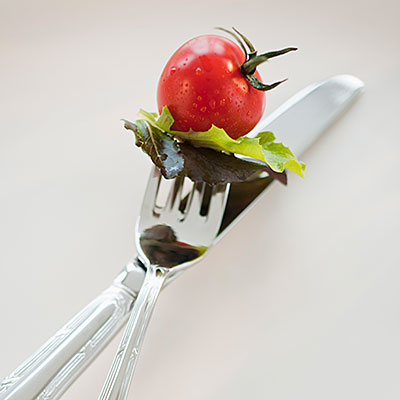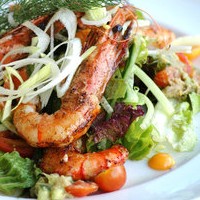 Getty Images You probably know that weight gain ups your risk of diseases like diabetes. But you might not realize how complicated that link really is, says Osama Hamdy, MD, medical director of the obesity clinical program at Joslin diabetes center in Boston and author of The Diabetes Breakthrough.
Getty Images You probably know that weight gain ups your risk of diseases like diabetes. But you might not realize how complicated that link really is, says Osama Hamdy, MD, medical director of the obesity clinical program at Joslin diabetes center in Boston and author of The Diabetes Breakthrough.
Every time you eat, your pancreas produces insulin. This hormone helps your body harness the energy provided by food by "unlocking" your cells, helping to move sugar (aka glucose) inside each one, where it's used for fuel.
Next Page: 4 Smart Strategies for Fighting Back
 Getty Images 4 Smart Strategies for Fighting Back
Getty Images 4 Smart Strategies for Fighting BackIf you have diabetes—especially if you take insulin—it's important to avoid blood sugar dips. So cutting out snacks as a way to shrink your calories isn't an option. But just because you have to eat more often doesn't mean you have to eat more. "You don't need an extraordinarily large number of calories to function, even with diabetes," Marrero says. "Eating small portions throughout the day is a good way to cut calories while keeping your blood sugar steady." If you're on the go, plan snacks in advance, says Jessica Crandall, RDN, a certified diabetes educator and spokesperson for the academy of nutrition and dietetics. Try packing 1 ounce of turkey jerky with whole-wheat crackers or a piece of fruit.
When dieting, "you need to be like the three bears and get the right mix of carbs, protein and fiber to keep blood sugar balanced," Crandall says. Focusing solely on calories can actually hinder weight loss. "You need protein to support muscle and metabolism, fat for the absorption of vitamins and carbs to sustain energy."
Exercise helps muscles take in glucose without the need for insulin and improves insulin sensitivity over time, Dr. Hamdy says. People with diabetes should start slow: "Aim to get at least 175 minutes of exercise a week, but in short bouts—10 minutes here and there—all day long." (If you're not already active, talk to your doctor first.)
Stress kicks off your fight-or-flight response, which prompts the body to produce less insulin and release more glucose, ensuring that you have plenty of fuel in case you need to fight off—or flee from—a threat, Marrero says. This is great if you have to, for example, outrun a hungry tiger, but you don't need the extra fuel when you're dealing with modern stressors, like your commute or an upcoming bill. "That's why it's important to reduce your stress load and learn to cope—without using food or alcohol," Marrero says. Make sure you get plenty of sleep each night, walk as much as possible during the day and try supplementing your regular workouts with stress-relieving activities, such as yoga, meditation or tai chi.
Next Page: Eat These to Battle Belly Fat
Eat These to Battle Belly Fat
The benefits of fiber-rich foods—like oatmeal, lentils and beans—are twofold. First, because your body digests fiber slowly, it helps slow down the digestion of sugars, too, which can even out blood glucose spikes. Second, fiber is a known belly fighter: A study from wake forest Baptist medical center in Winston-Salem, N.C., found that for every extra 10 grams of soluble fiber eaten per day, participants lost 3.7 percent of their visceral fat over five years.
Avocados, nuts, olive oil—all are great sources of monounsaturated fatty acids, or MUFAs. And a 2007 study published in the journal Diabetes Care noted that a diet high in MUFAs can prevent fat from being distributed around the belly.
To keep your blood sugar under control, it's best to choose complex carbohydrates over simple, refined grains. And there's another bonus: Whole grains blast your belly. In 2008, a 12-week study published in The American Journal of Clinical Nutrition found that participants who ate a diet rich in whole grains lost significantly more belly fat than those who consumed refined carbs instead.




